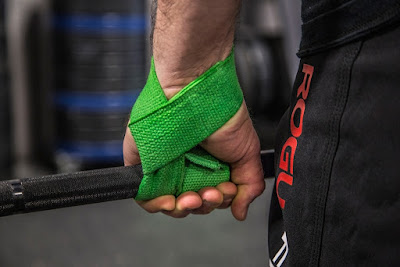If you are new to Olympic weightlifting (or just working out/training/lifting) then you probably have not clue if you should or shouldn't complete a warm up or which kind if you so choose to complete a warm up. If you rummage through the internet you will find in general three mind sets when it comes to warm ups.
First belief - Mark Rippetoe: Strength and condition specialist and author of
Starting Strength states. "No jumping around in the floor, no 100 air squats, no goofy walking, no
stretching other than assuming the bottom position a couple of times.
Just get warm under the bar, add weight, and squat." He continues, "There is no evidence, in either The Literature or in the objectively
evaluated experience of coaches or lifters, that 30 minutes of
stretching before a barbell workout is anything other than a detrimental
waste of time." In his mind, you would be warm once you put on your pants and get to the gym. No need for stretching or a traditional warm up as it takes away from power output.
Second belief -
Mayo Clinic/Most professionals: A warm-up
gradually revs up your cardiovascular system by raising your body
temperature and increasing blood flow to your muscles. Warming up may
also help reduce muscle soreness and lessen your risk of injury. This brief, but specified warm up is built in to the workout to prepare for lifting, bending and repeat use of the muscles and mechanics of the body to prevent injury and increase performance.
Last belief - Crossfit/Olympic Weightlifting: The belief behind these warm ups is to get your body moving/temperature raised, heart rate up, stretch to create "mobility" or flexibility and prepare for a rigorous workout. Typically you will see these athletes utilizing a lacrosse ball or foam rollers to self massage/release myofascial tissue (muscle connective tissue). According to
Performbetter.com, athletes "use the roller to apply pressure to sensitive areas in their
muscles-sometimes called trigger points, knots, or areas of increased
muscle density." Also, the site states, "One would usually use a foam roller to apply longer more sweeping strokes to the long muscle
groups like the calves, adductors, and quadriceps, and small directed
force to areas like the TFL, hip rotators, and glute medius." The idea according to
aaptive magazine is that by foam rolling, you can increase blood flow to the tissues and improve
mobility, which aids in recovery and performance. It helps to reduce
tightness in muscles so that they can move through a range of motion
with ease.
So which should you believe and practice?
You probably think because I am blogging about Olympic lifting and I was
so extensive on that one, it is my belief. Well, truthfully I like to
incorporate all three to some degree. In my opinion, each have their perspective pros and cons... thus incorporating all of them. But I am not here to discuss all that. What I am going to go over is what I personally do as a certified personal trainer and person with a degree in Health and Human Performance.
As a general, rule a warm up is just that... getting the body temp up and blood flowing. So the very first thing I do (and some will contest/disagree with part or all of this) is complete 2-3 minutes of exercise for one of the following:
Brisk walk/slow jog
Light rowing
Jumping jacks
Jump rope
Elliptical
Once I complete the 2-3 minute exercise I will begin with a
dynamic warm up (actively moving through the positions/stretches) of leg swings, arm swings, arm circles, trunk rotations, knee/ankle rotations and hip extension/flexion/rotation.
Next, I go into a very brief static stretch (5 second hold) for each muscle group beginning at the ankles and moving upward all the way to my neck. If I feel extra tightness in my ankles, wrists, triceps, hips or shoulders I will hold up to 15 seconds, but no longer. I am not going to be able to extend my mobility or create a greater range of flexion with these holds. That will take weeks or months to improve. However, I do want to work on getting into position, create a mind muscle connection and decrease the pain reception prior to working out.
After completing these dynamic stretches followed by static stretches, I will then move on to the PVC previously recommended in the blog titled "Equipment recommended?!?" or a barbell. At this point I complete 5 reps of each: hang snatch high pulls, Snatch Grip behind neck OH press, Good morning squats, "shitty squats", Snatch Grip OH Squat, clean grip shrugs, clean shrug to front rack, front squat, split jerk, power jerk and then finally close grip (as close as you can perform comfortably) OH squat.
After completing all of this (I know... time consuming, but very integral) I begin actual lifts with clean pulls, snatch pulls, drop snatch, hang snatch, hang cleans or full cleans (depends on prescribed exercises) with the barbell moving up in weight every three good lifts until I reach working weight (weight prescribed in plans for that day). And -NOW- you are ready for the true workout!
To get a good idea of what a traditional warm up looks like, take a look at this
warm up for Olympic Weightlifting video. Or if I get enough comments or inquiry, I will put a video together and post it for you to see first hand my exact warm up.
I hope this helps get you physically and mentally ready to lift as well as prevent injuries. If you have questions such as what exercises to incorporate into the dynamic stretches, what static stretches to implement, weight to use etc., please leave a comment and I will address it ASAP!
Until next week... lift it overhead, slam it to the ground and repeat! Practice leads to progression... progression to Gold!


































